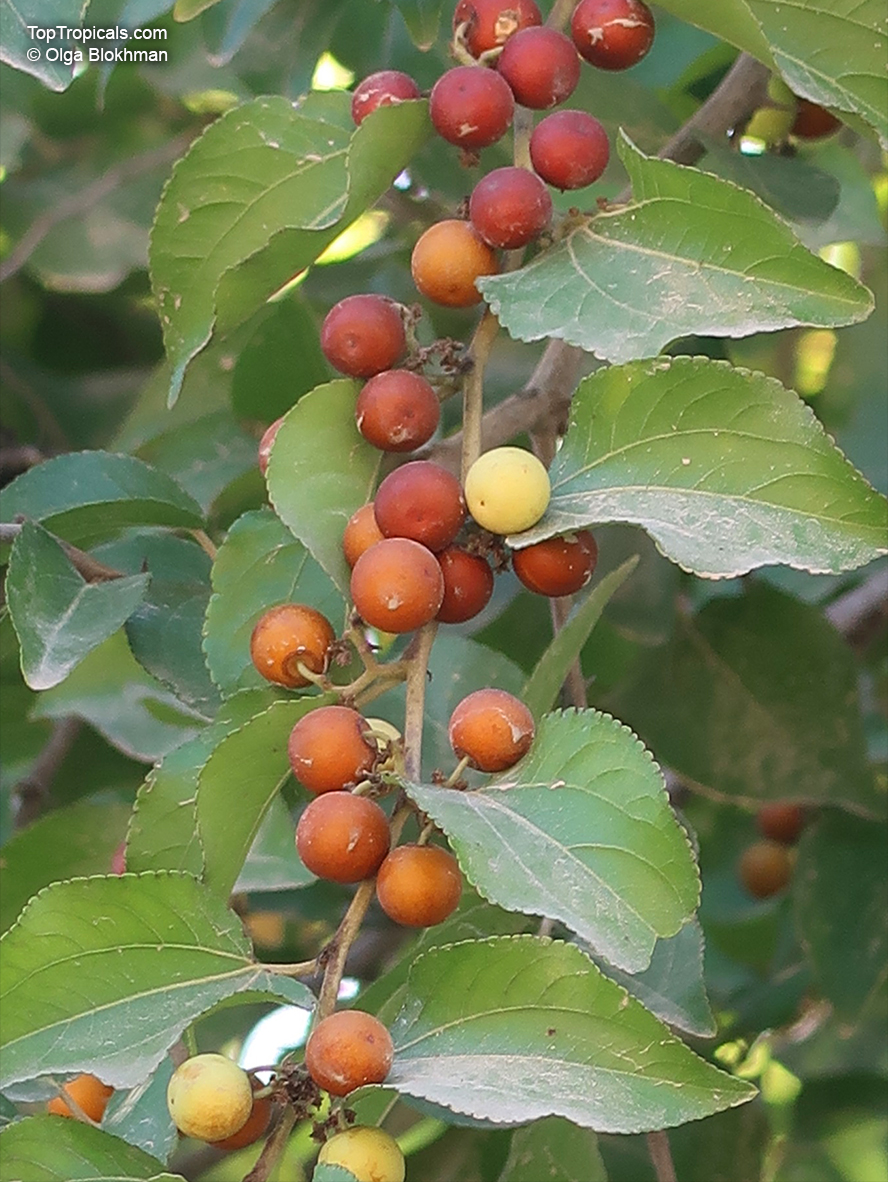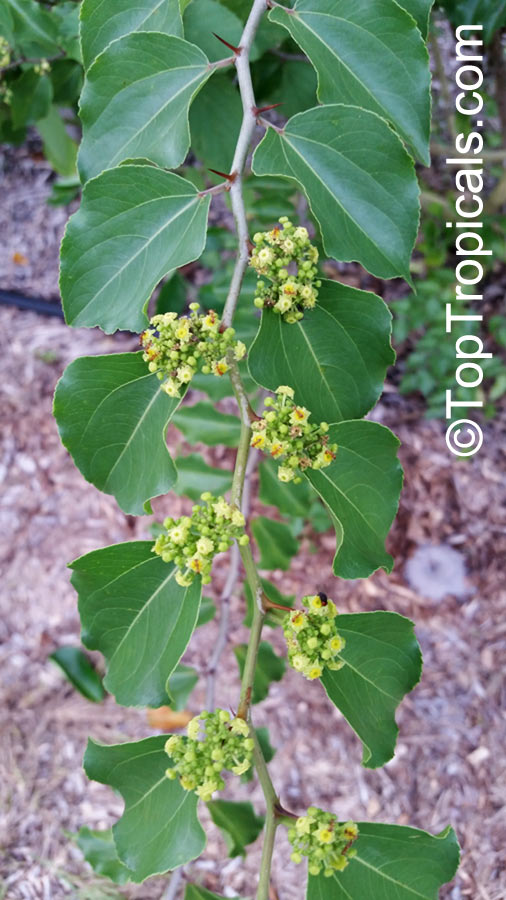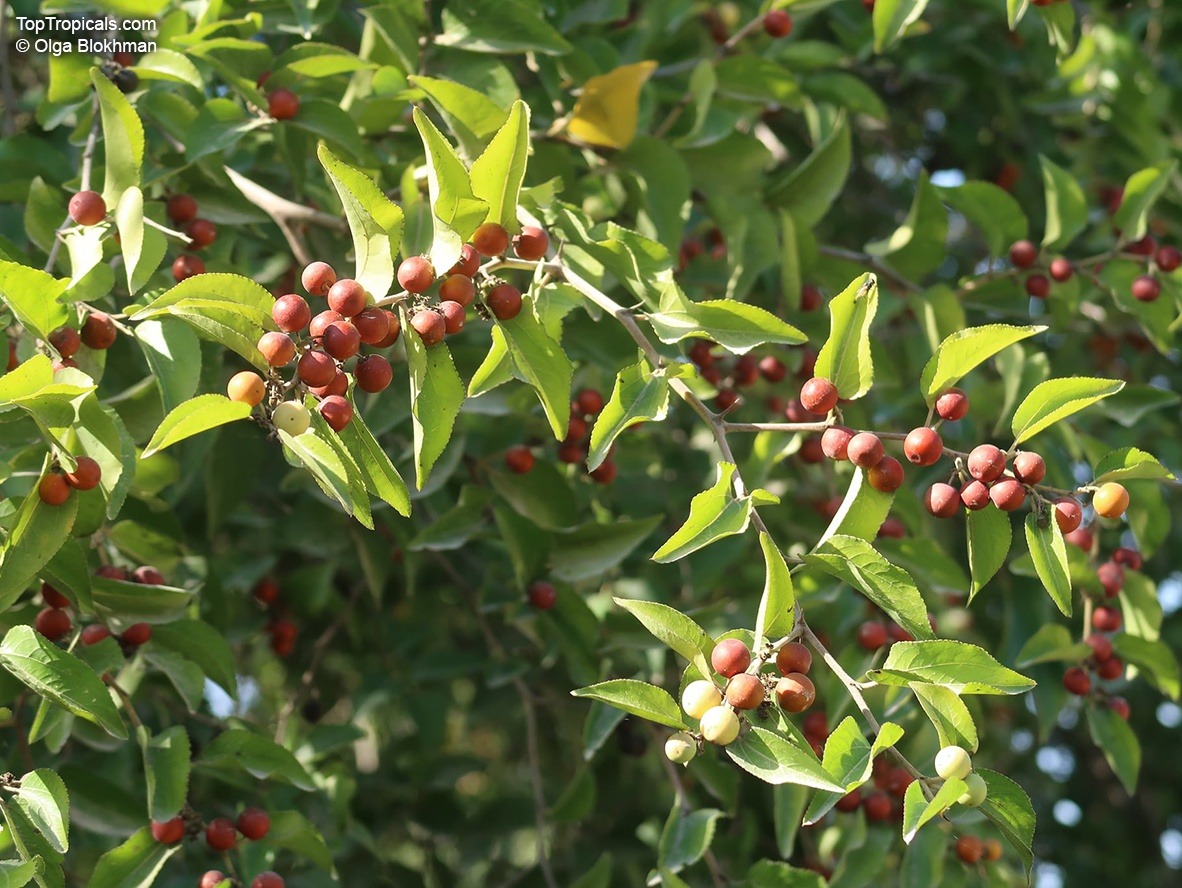Pictogram Guide · Mouse over pictogram for definition
Ziziphus mucronata, Zizyphus adelensis, Zizyphus mitis
Buffalo thorn, Cape thornFamily: Rhamnaceae
Origin: South Africa









Ziziphus mucronata, also known as Buffalo thorn, is a drought resistant shrub or a small tree that is well-suited for gardens in warm, dry climates. Buffalo thorn is characterized by its crooked trunk, drooping branches, and glossy, drooping leaves with three conspicuous veins at the base. The branches are covered in spines, one curved and one straight. The shrub produces inconspicuous yellowish flowers in clusters, which produce a large amount of nectar that attracts many insects, particularly bees. The round, russet-colored fruits contain a dry, meal-like pulp and are eaten by many birds and wild animals.
It prefers full sun to partial shade and well-drained, fertile soil, but it can also be grown in containers. It ca be grown in ground in USDA Zone 9-11. While it is not particularly cold hardy, mature plants can withstand temperatures as low as the low 30s Fahrenheit for short periods of time. To protect container plants in cold regions, it is recommended to bring them indoors during the winter to prevent frost damage.
Buffalo thorn should be watered moderately and not overwatered, as this can cause root rot. The leaves should be sprayed with water to keep them looking healthy. Pruning back crisscrossing limbs and any dead wood can encourage healthy new growth. In addition to being an attractive garden plant, this shrub is also known to attract butterflies and hummingbirds.
Bark, leaves, and roots of Buffalo thorn, as well as decoctions made from these parts, have been used in traditional medicine to treat a variety of ailments, such as skin infections, chest problems, and various pains, including toothaches. The seeds were ground and used as a coffee substitute.
Similar plants:





